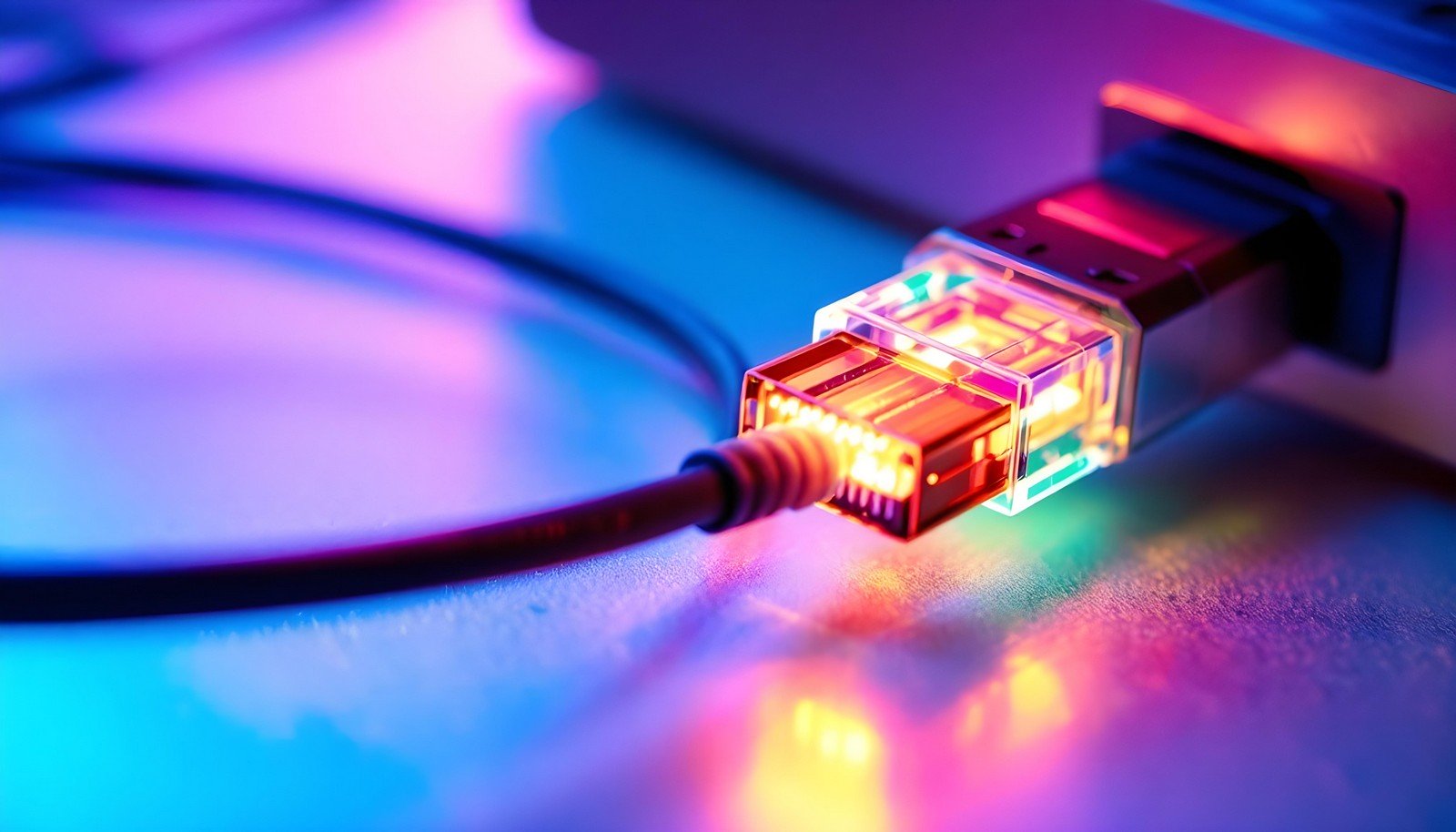FireWire

Quick Navigation:
- FireWire Definition
- FireWire Explained Easy
- FireWire Origin
- FireWire Etymology
- FireWire Usage Trends
- FireWire Usage
- FireWire Examples in Context
- FireWire FAQ
- FireWire Related Words
FireWire Definition
FireWire, also known as IEEE 1394, is a high-speed data transmission standard widely used for connecting devices such as digital cameras, external hard drives, and audio equipment. Developed by Apple in the 1980s and 1990s, FireWire supports data transfer speeds up to 800 Mbps (for FireWire 800). It provides a reliable and efficient connection for devices requiring large data bandwidth, allowing seamless video and audio streaming, file transfers, and device charging.
FireWire Explained Easy
Think of FireWire as a really fast way for computers and gadgets to "talk" to each other. Imagine moving a big stack of photos from one device to another in seconds—that's what FireWire does. It's like a super-speedy digital handshake that makes sure data gets where it needs to go quickly and safely.
FireWire Origin
FireWire originated from a collaborative effort by Apple, Sony, and other tech companies during the late 1980s to early 1990s. It was designed to meet the growing demand for a standard high-speed connection for multimedia devices.
FireWire Etymology
The name “FireWire” is thought to evoke speed and dynamism, inspired by the rapid data transfer capabilities of the technology.
FireWire Usage Trends
FireWire was widely adopted in the 1990s and 2000s, particularly in the video production and audio recording industries. However, its usage has declined due to the emergence of USB 3.0 and Thunderbolt technologies, which offer faster speeds and broader compatibility.
FireWire Usage
- Formal/Technical Tagging:
- High-Speed Data Transmission
- IEEE 1394 Standard
- Multimedia Interfaces - Typical Collocations:
- "FireWire cable"
- "FireWire port"
- "FireWire 800 connection"
- "FireWire external drive"
FireWire Examples in Context
- A videographer uses FireWire to transfer high-definition footage from a camcorder to their computer.
- An external FireWire hard drive is employed to store large audio files for a professional recording session.
- Older Mac computers often featured built-in FireWire ports for seamless multimedia device integration.
FireWire FAQ
- What is FireWire used for?
FireWire is used for high-speed data transfer between devices, such as cameras, computers, and external drives. - What are the types of FireWire?
There are three main types: FireWire 400 (IEEE 1394a), FireWire 800 (IEEE 1394b), and FireWire S800T, which includes Ethernet capabilities. - How fast is FireWire?
FireWire 400 supports up to 400 Mbps, while FireWire 800 can reach speeds of 800 Mbps. - Is FireWire still used today?
While less common, FireWire is still used in some professional audio and video setups. - What replaced FireWire?
Technologies like USB 3.0 and Thunderbolt have largely replaced FireWire due to their faster speeds and wider adoption. - Can I connect FireWire to USB?
Special adapters exist, but compatibility issues often arise due to fundamental differences in the technologies. - Why is FireWire preferred for video editing?
Its consistent data transfer rates make it ideal for large video files without interruptions. - Do modern computers support FireWire?
Many modern computers lack native FireWire ports, but PCIe cards or adapters can add support. - What is the difference between FireWire 400 and 800?
FireWire 800 offers double the speed and a different connector design compared to FireWire 400. - What is IEEE 1394?
IEEE 1394 is the technical standard for FireWire, defining its specifications for high-speed data transfer.
FireWire Related Words
- Categories/Topics:
- Data Transfer Standards
- Multimedia Technology
- Computer Hardware
Did you know?
FireWire was a favorite for filmmakers in the early 2000s. Many digital camcorders of the time exclusively used FireWire connections to transfer footage directly to editing software, making it an essential tool for video production workflows.
PicDictionary.com is an online dictionary in pictures. If you have questions or suggestions, please reach out to us on WhatsApp or Twitter.Authors | Arjun Vishnu | @ArjunAndVishnu

I am Vishnu. I like AI, Linux, Single Board Computers, and Cloud Computing. I create the web & video content, and I also write for popular websites.
My younger brother, Arjun handles image & video editing. Together, we run a YouTube Channel that's focused on reviewing gadgets and explaining technology.



Comments powered by CComment